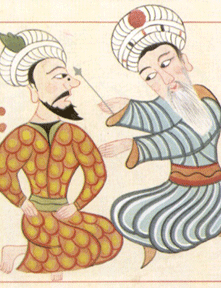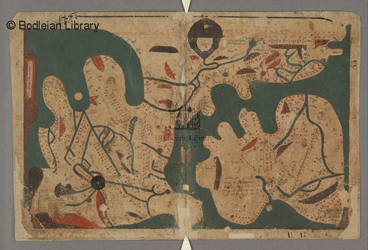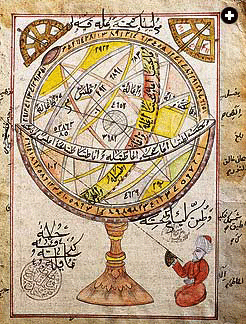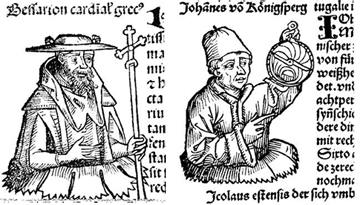
AN INTRODUCTION TO THE DE REGIO MONTE CODE, CARDINAL BESSARION’S AGENDA, AND PIERO DELLA FRANCESCA’S ENIGMA
[The noted historian of Islamic science, David A. King, recently retired from his position as Professor of the History of Science at Frankfurt University, has published a new book on two of the most remarkable objects surviving from the Renaissance, one an astrolabe and the other a painting. The connection between the two is described in detail in his new book Astrolabes and Angels, Epigrams and Enigmas – From Regiomontanus’ Acrostic for Cardinal Bessarion to Piero della Francesca’s Flagellation of Christ, Stuttgart: Franz Steiner, 2007. An associated website is http://web.uni-frankfurt.de/fb13/ign/Code.htm.]
Only recently have we achieved a better understanding of two monuments to the intellectual genius of the Renaissance, both of which have caused scholars a lot of trouble over several decades. As it happens, the two are intimately related.
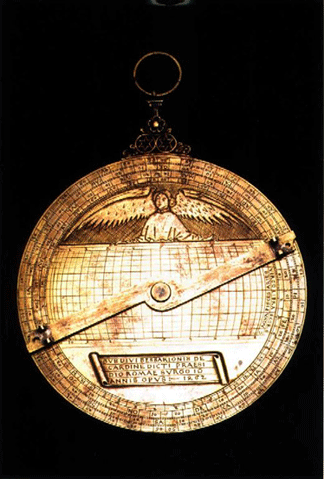
The back of the astrolabe made by Regiomontanus for Cardinal Bessarion, with an inscription or epigram and the image of an angel.
One is an astrolabe, presented to the ageing Greek Cardinal Bessarion in Rome, 1462, by his new protégé, the young German astronomer Regiomontanus. Continue reading Astrolabes and Angels, Epigrams and Enigmas


